The tale is often regarded as the first of the so-called "marriage group" of tales, which includes the Clerk's, the Merchant's and the Franklin's tales. But some scholars contest this grouping, first proposed by Chaucer scholar Eleanor Prescott Hammond and subsequently elaborated by George Lyman Kittredge, not least because the later tales of Melibee and the Nun's Priest also discuss this theme. A separation between tales that deal with moral issues and ones that deal with magical issues, as the Wife of Bath's does, is favoured by some scholars.
The tale is an example of the "loathly lady" motif, the oldest examples of which are the medieval Irish sovereignty myths such as Niall of the Nine Hostages. In the medieval poem The Wedding of Sir Gawain and Dame Ragnelle, Arthur's nephew Gawain goes on a nearly identical quest to discover what women truly want after he errs in a land dispute. Some have theorized that the Wife's tale may have been written to ease Chaucer's guilty conscience. It is recorded that in 1380 associates of Chaucer stood surety for an amount equal to half his yearly salary for a charge brought by Cecily Champaign for "de rapto," rape or abduction; the same view has been taken of his Legend of Good Women, which Chaucer himself describes as a penance.
The Wife of Bath's Prologue both draws from and critiques the long medieval tradition of antifeminist texts. As Helen Cooper notes, Alisoun's "materials are part of the vast medieval stock of antifeminism", specifically St. Jerome's Adversus Jovinianum, which was "written to refute the proposition put forward by one Jovinianus that virginity and marriage were of equal worth". The simple fact that Alisoun is a widow who remarries more than once suggests a relationship with antifeminist traditions. Further evidence of this can be found through Alisoun's observation: "For hadde God commanded maydenhede, / Thanne hadde he dampned weddyng with the dede" (III 69-70). Alisoun refutes Jovinianus' proposition concerning virginity and marriage by noting that God would have condemned marriage and procreation if He had commanded virginity. Her decision to use God as a defense of sorts for her promiscuity is significant, as it shows how the Bible is another source that Alisoun draws upon, although her interpretations of Scripture, such as Paul on marriage (III. 158-161), are tailored to suit her own purposes. Nevertheless, while Alisoun in some ways embodies antifeminist beliefs, she resists them as well. For instance, her repeated acts of remarriage are an example of how she mocks "clerical teaching concerning the remarriage of widows". Actually, as noted by Mary Carruthers, "a rich widow was considered to be a match equal to, or more desirable than, a match with a virgin of property". Alisoun illustrates this point by describing her ability to remarry four times, and also to attract a man who is much younger than she, Jankyn. Thus, while Alisoun is portrayed as epitomizing antifeminist traditions through her very thoughts and actions, she also attacks them, in part by forcing readers to realize that it is men, including the author Chaucer, who construct them in the first place.
Mary Carruthers and Helen Cooper reflect on the way that Alisoun, in particular, does not behave as she should in any of her marriages. Through Alisoun's nonconformity to the expectations of her role as a wife, the audience is shown what proper behavior in marriage should be like. Carruthers' essay outlines the existence of deportment books, the purpose of which was to teach young women how to be model wives. Carruthers notes how Alisoun's behavior in the first of her marriages "is almost everything the deportment-book writers say it should not be" (Carruthers 1979: 213). For example, she lies to her old husbands about them getting drunk and saying some regrettable things (III.380-382). Yet, Carruthers does note that the Wife does do a decent job of upholding her husbands' public honour. Moreover, deportment books taught girls that "the husband deserves control of the wife because he controls the estate" (Carruthers 1979:214); it is clear that Alisoun is the one who controls her husbands in her various marriages. Perhaps this is because her first three husbands are so old "that for syk unnethes myghte they stonde" (III.394). Helen Cooper also notes that behaviour in marriage is a theme that emerges in the Wife of Bath's Prologue, and although she does look at the character of Alisoun and notes how she did not really exhibit the behavior expected of her, she also describes Jankyn. Cooper notes how Jankyn "cannot be taken as any principle of correct Christian marriage" (Cooper 1996:149). He, too, does not exhibit the kind of behavior that he is supposed to within his marriage, which can perhaps be attributed to his young age and lack of experience in relationships, although he does change at the end, as does Alisoun. Thus, through Alisoun's and Jankyn's failure to conform to expected behavior in marriage, readers are taught to realize what proper behavior in marriage likely is–the opposite of Alisoun's and Jankyn's.
As Helen Cooper argues, the theme of female dominance is fundamental to the Wife of Bath's Prologue. She draws her authority from her own experience; master of the bedroom based on the comments that she makes to her fellow pilgrims. For instance, she notes that:
Alisoun's husbands are depicted as peasants who must cater to her sexual appetite. Her characterization as master, or sovereign lord, is particularly evident in the following passage:
The image of the whip solidifies her role as master; she tells everyone that she is the one in charge in her household, especially in the bedroom. Alisoun appears to have an insatiable thirst for sex; the result is a satirical, sexual depiction of a woman, but also of feudal power arrangements. In her essay, "The Wife of Bath and the Painting of Lions," Mary Carruthers describes the relationship that existed between love and economics for both medieval men and women. Carruthers notes that it is the independence that Alisoun's wealth provides for her that allows Alisoun to love freely (Carruthers 1979:216). This implies that autonomy is an important component in genuine love, and since autonomy can only be achieved through wealth, wealth then becomes the greatest component for true love. Love can, in essence, be bought: Chaucer makes reference to this notion when he has Alisoun tell one of her husbands: She appears to make reference to prostitution, whereby "love" in the form of sex is a "deal" bought and sold. Alisoun's use of words such as "dette (debt)" (III.130) and "paiement (payment)" (III.131) also portray love in economic terms, as did the medieval Church: sex was the marriage debt women owed to the men that they married. Hence, while the point that Carruthers makes is that money is necessary for women to achieve sovereignty in marriage, a look at the text reveals that the concept of love is, among other things, an economic concept. This is perhaps best demonstrated by the fact that Jankyn gives up wealth in return for love, honour, and respect.
The tale is an example of the "loathly lady" motif, the oldest examples of which are the medieval Irish sovereignty myths such as Niall of the Nine Hostages. In the medieval poem The Wedding of Sir Gawain and Dame Ragnelle, Arthur's nephew Gawain goes on a nearly identical quest to discover what women truly want after he errs in a land dispute. Some have theorized that the Wife's tale may have been written to ease Chaucer's guilty conscience. It is recorded that in 1380 associates of Chaucer stood surety for an amount equal to half his yearly salary for a charge brought by Cecily Champaign for "de rapto," rape or abduction; the same view has been taken of his Legend of Good Women, which Chaucer himself describes as a penance.
The Wife of Bath's Prologue both draws from and critiques the long medieval tradition of antifeminist texts. As Helen Cooper notes, Alisoun's "materials are part of the vast medieval stock of antifeminism", specifically St. Jerome's Adversus Jovinianum, which was "written to refute the proposition put forward by one Jovinianus that virginity and marriage were of equal worth". The simple fact that Alisoun is a widow who remarries more than once suggests a relationship with antifeminist traditions. Further evidence of this can be found through Alisoun's observation: "For hadde God commanded maydenhede, / Thanne hadde he dampned weddyng with the dede" (III 69-70). Alisoun refutes Jovinianus' proposition concerning virginity and marriage by noting that God would have condemned marriage and procreation if He had commanded virginity. Her decision to use God as a defense of sorts for her promiscuity is significant, as it shows how the Bible is another source that Alisoun draws upon, although her interpretations of Scripture, such as Paul on marriage (III. 158-161), are tailored to suit her own purposes. Nevertheless, while Alisoun in some ways embodies antifeminist beliefs, she resists them as well. For instance, her repeated acts of remarriage are an example of how she mocks "clerical teaching concerning the remarriage of widows". Actually, as noted by Mary Carruthers, "a rich widow was considered to be a match equal to, or more desirable than, a match with a virgin of property". Alisoun illustrates this point by describing her ability to remarry four times, and also to attract a man who is much younger than she, Jankyn. Thus, while Alisoun is portrayed as epitomizing antifeminist traditions through her very thoughts and actions, she also attacks them, in part by forcing readers to realize that it is men, including the author Chaucer, who construct them in the first place.
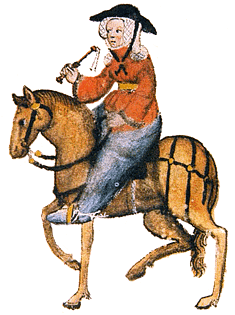 Wife of Bath | 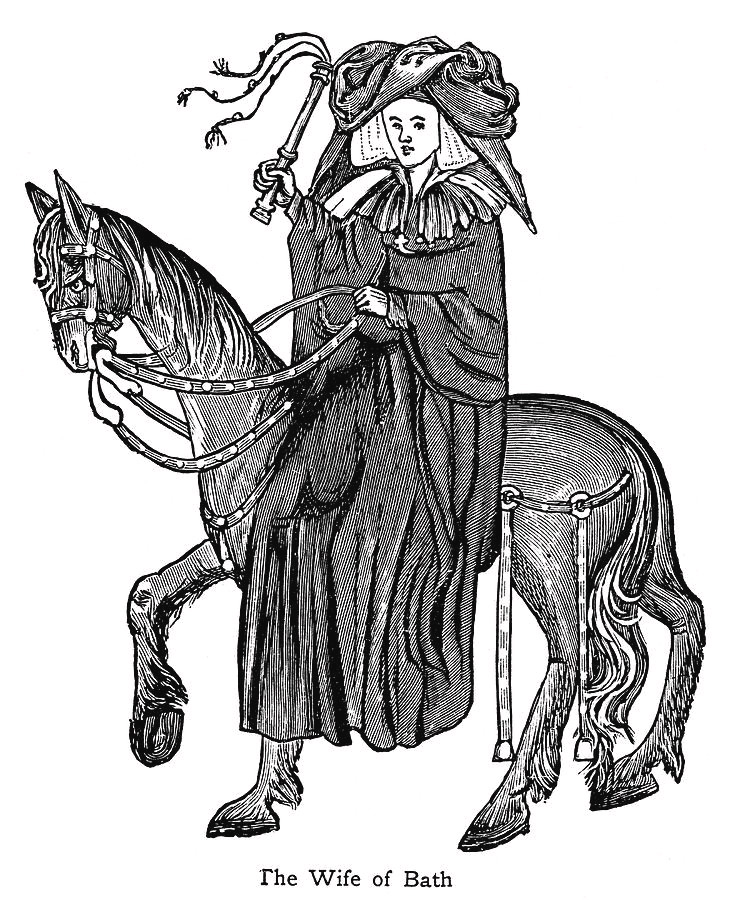 of The Wife of Bath, |  CANTERBURY TALES : text |  Mixtape: The Wife of Bath |  The Tale of the Wife of Bath |
 Julie Walters as the Wife of |  The Wife of Bath in an | 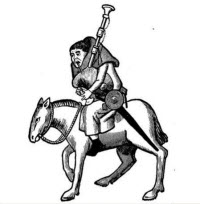 canterbury tales: miller\x26#39;s |  Canterbury Tales Wife of Bath |  canterbury tales: knight\x26#39;s |
Alisoun's husbands are depicted as peasants who must cater to her sexual appetite. Her characterization as master, or sovereign lord, is particularly evident in the following passage:
 Keywords: tales wife of Bath | in The Canterbury Tales, |  The Wife of Bath - click to |  of The Canterbury Tales,» | 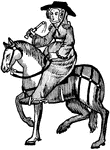 Canterbury Tales The Wife of |
Canterbury Tales BBC1- The | 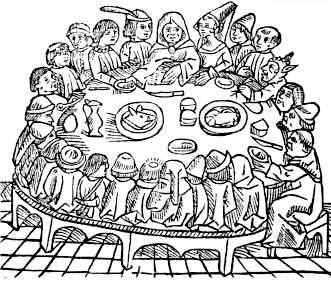 The Wife of Bath, |  The Canterbury Tales |  The Wife of Bath, Canterbury |  The Wife of Bath from |

No comments:
Post a Comment